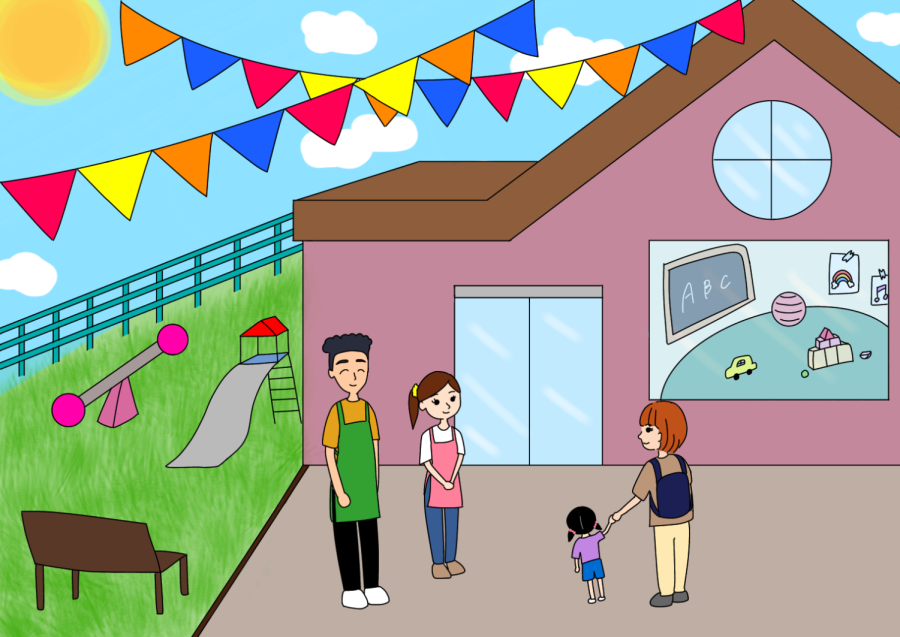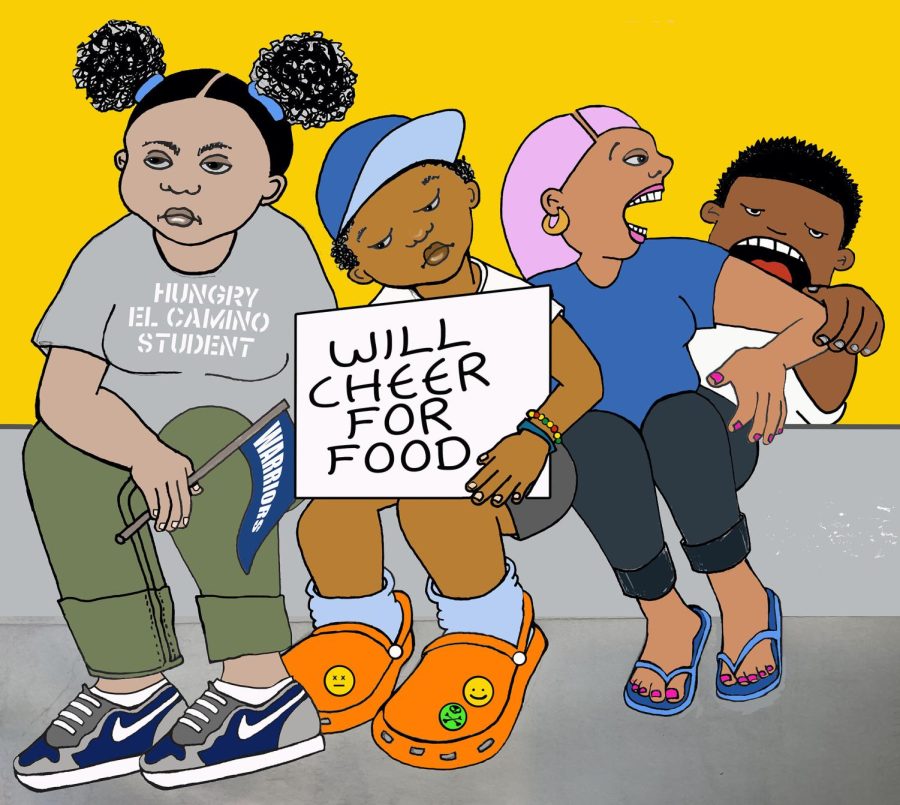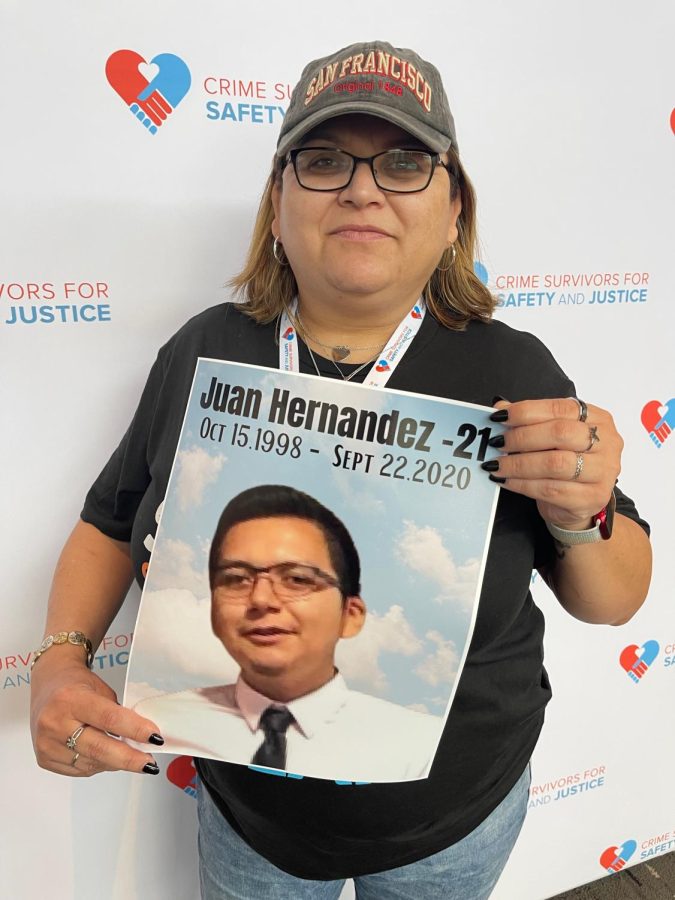“I have this quote by John Patrick Hanley that amazed me when I read it, ‘In the run up to the 2003 Iraq invasion [.] I watched with an ache in my chest, a familiar feeling of oppression, devoid of words. This mute anguish is familiar to me. It is the beginning of a new work,'” read Joyce Dallal from the Los Angeles Times Magazine.
There is the artist that creates for aesthetic appeal. There is the artist that creates in order to reinforce the humanistic need to intimately connect with others by expressing their experiences, passions, and ideas. And there is the artist that creates because they have the urgency to communicate a message, this artist will regard their art as a vehicle for awareness by representing an often understated, misunderstood, or avoided reality. Joyce Dallal is a mixture of them all.
A USC graduate, Dallal is currently a digital art and photography professor at El Camino College and an artist whose background includes printmaking, painting, and photography. Dallal has shown her art in exhibitions across the United States, including over forty shows in Los Angeles alone, as well as internationally. She has received a number of grants and commission requests and is highly active as an artist.
Dallal’s piece titled Descent was being exhibited in the visitors lobby of the UN in New York starting January 16 through February 20 and was recently extended to March 8. Descent was first exhibited in Hollywood’s Barnsdall Art Park in the Municipal Art Gallery as a part of a 2007-2008 City of Los Angeles Individual Artist Fellowship (COLA) show.
As a part of the COLA show, many people said Descent should be at the UN. Dallal took everybody’s comment into consideration and shortly after contacted the UN about exhibiting Descent there. “They said they would do it,” said Dallal about getting her piece at the UN. She came upon the show almost effortlessly. Not many artists have the opportunity to be able to have a piece at the UN and to have that kind of exposure.
Descent is part of an exhibit titled Flight which focuses on the effects war has on populations and is being shown with another sculptural piece by Samuel Olou titled Ese.
“We are not accustomed to having sculptural pieces here so it makes people curious,” said UN exhibitions director Liza Wichmann of Dallal’s well received piece, “It was a challenge to set up, people scrutinize it. It is very unique besides from it’s all over meaning.”
Descent is made up of a thousand folded paper airplanes suspended from the ceiling with wire and weighted down to the floor by cement pieces and descends in a flight formation to make the shape of a larger plane. On the paper airplanes are printed the 3rd and 4th Geneva Conventions. The 3rd Geneva Convention lists the rights of prisoners of war stating that all POWs must be treated humanely and lists in Article 13 that they will be protected against insults and public curiosity. The 4th Geneva Convention aims to protect civilians’ rights during a war.
“It is very effective, especially with the other exhibit.” said Wichmann, “They relate to each other and shows the flight of people and prisoners of war.” Accompanying Descent is Olou’s Ese, comprised of one hundred terra cotta feet that signify the migration of communities that takes place during times of war or famine.
Coming from an Iraqi Jewish background Dallal was raised in the Midwest until age 10 when she moved with her family to Los Angeles. In 1945 her father left Baghdad for the U.S. on a student visa and in 1948, following the establishment of Israel, Iraq declared him a persona non grata and he was denied U.S. citizenship said Louisa Steinman in “Joyce Dallal and Aaron Glass”.
“They tried very hard to be American, they only spoke English,” said Dallal of her parents, “They knew they wouldn’t go back to Iraq because they were Jewish.”
Given her parents’ disconnection from their past, the circumstances that forced their lives into a separate land and culture was the force that would awaken in Dallal years later and blossom into an art form that would come to move others from within.
“I like how it relates to other people and other immigrant stories, as well as my own,” said Dallal of spending twenty years working with scenes derived from her background.
“Generally I move in a spiral,” said Dallal of the evolutionary tendencies of her art, “It stays in the same realm because that’s what you’re into.” Hers pieces often correlate to issues of war, the Middle East, and immigrant stories. In a society so deeply entrenched in the media, it is hard for Dallal to avoid subject matter of the Middle East and the war with Iraq because she is always reading about it. A soul that resonates with her roots, Dallal has created numerous pieces dedicated to these issues.
El Camino College’s Art Club, 3D Design class, and Sculpture class, in addition to 4 hired art students, helped Dallal in creating Descent, by participating in plane folding Fridays or taking on the project as a class assignment.
Pleased to show her pieces in non-traditional places, Dallal is honored to have her piece at the U.N. because it’s not just a museum, it’s in a place where more people will see it she said. “It gets a huge audience coming from all over the world and all walks of life,” she said of the viewers that are engulfed by Descent as soon as they walk through the doors of the visitors lobby.
“Its just words. A lot of these documents have shaped peoples lives. Its even shaped countries,” said Dallal of the U.N.’s Geneva Conventions. While creating the piece she discovered the multifaceted meaning it had. When the U.S. went to war with Iraq, Dallal studied the Geneva Conventions and was angered that the U.S. was in violation. “I learned a lot about the Geneva Conventions. It’s always changing because war is always changing,” said Dallal.
“The Geneva Conventions doesn’t stop war, it just gives rules,” said Dallal, “It’s okay to hurt people who can fight, but not the one’s who can. it’s a paradox.” The U.S. came into question of breaching the 3rd Geneva Convention when the Bush Administration and the CIA were accused of having endorsed torturous interrogation techniques, including weatherboarding, on suspected terrorist detainees. The 4th Geneva Convention aimed at protecting civilians’ rights prohibits physical and moral coercion of a civilian to obtain information which the U.S. was also accused of forgoing.
“Our country is not ascending but descending,” said Dallal about her thoughts that fueled the creation of Descent, “It also means descendant. After shaped and hung, I thought it looked like a dinosaur; all wired it could fall down any minute. The idea of war is a primitive instinct and keeps on being passed down.” In the process of hanging it somebody suggested to the artist that the piece looked like origami cranes which signify long life and peace, in a way reminiscent of Hiroshima.
“She uses different venues and channels to portray her art,” said Dallal’s colleague, art professor Ali Ahmadpour, “It can create discussion and showing a piece at the U.N. can be very effective, the place has an authority so people will accept it more.”
“Its great to reach out with one’s perspective on things that are going on,” said Biology major Ana Farenreich.
“Some people believe you’re not supposed to mix art and politics,” said Dallal about didactic art but she believes an artist can reach people and get a story across in an artwork that they can relate on a more personal basis.” Dallal believes that art is tremendously important because it teaches people the link between things, the relationships, and how small things come together to make a complete situation.
When it comes to art students the El Camino professor advises, “You have to define what is successful. You cannot define it in conventional terms.” The artist who’s, been exhibiting since her college years in the late 70’s, believes that remaining excited and persistent in creating your art along with having new ideas is partly what constitutes being successful.
During Dallal’s junior year in the late 70’s she had studied abroad in London. “I did all kinds of things that pissed off the faculty,” said Dallal of her use of mixed media at school in London. Eventually Dallal pleased the faculty by switching over to painting her family because she missed them, she said she would come back to that later in her work and she most definitely did.
Categories:
El Camino College Artist and Teacher Exhibits at the U.N.
By LUCY GUANUNA
•
February 10, 2009
More to Discover






